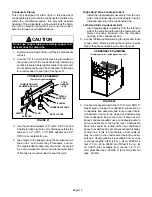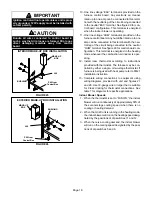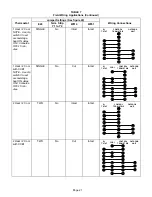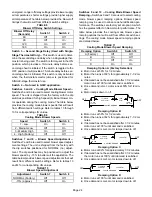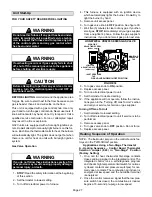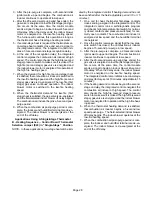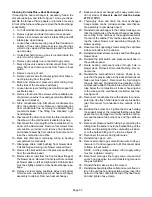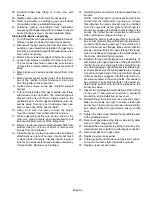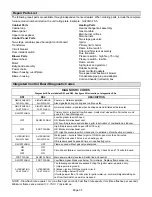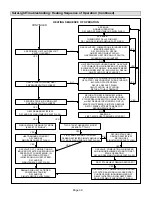
Page 29
TABLE 15
OPERATING SEQUENCE
G32V, CCB1 and Single-Speed Outdoor Unit
OPERATING MODE
SYSTEM DEMAND
SYSTEM RESPONSE
System Condition
Thermostat
Demand
*Relative Humidity
(Efficiency
Plus
Lights)
Blower
CFM
(COOL)
Comments
Normal operation
Y1
No demand. Humidity
level is acceptable
COOL
Compressor demand and indoor blower
speed controlled by thermostat demand.
*Call for humidity
removal during
cooling demand
Y1
Humidity level rises
above setpoint. Demand
initiated.
77%/74%
of COOL
Call for dehumidification initiated by CCB1
control. Indoor blower speed reduced by
CCB1 control.
Dehumidification
demand satisfied
during cooling deĆ
mand.
Y1
Humidity level falls below
setpoint. No demand
COOL
When humidity demand is satisfied, blowĆ
er speed immediately increases to the
COOL CFM to hasten the end of the cycle.
Call for cooling after
call for humidity
None
Humidity level above setĆ
point. Demand initiated.
Off
Dehumidification mode begins when relaĆ
call for humidity
removal.
Y1
Humidity level above setĆ
point. Demand initiated.
77%/74%
of COOL
Dehumidification mode begins when rela
tive humidity is greater than setpoint.
Humidity demand
satisfied between
None
Over setpoint (1 or more)
Off
While unit is not operating (no thermostat
demand) slide switch is moved down and
satisfied between
thermostat demands
(unit off cycle).
Y1
Change to acceptable
COOL
demand), slide switch is moved down and
back up. Blower operates at COOL CFM.
NOTE - When changing unit mode of operation from cooling to heating, indicating lights that are on will stay on until the first
thermostat heating demand.
* Reduced blower speed is 77% of COOL for V3 units and 74% of COOL for the V5 units.

